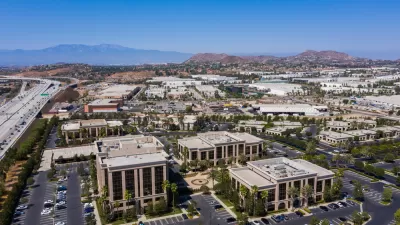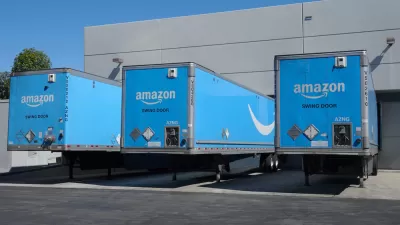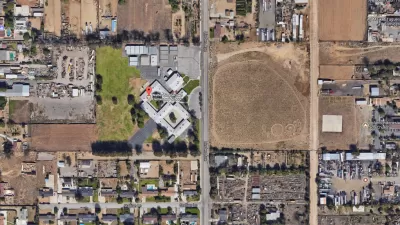Dr. Joe Lyou, CEO of the Coalition for Clean Air, walks through the legal necessity of South Coast AQMD's proposed Indirect Source Rule, which aims to accelerate the transition to zero-emission technologies and fleet electrification.

Last week, environmental and community groups reached a $47 million settlement with the developer of a proposed mega-warehouse in Moreno Valley to invest up to $50 million in solutions to electrify the facility. With the exponential rise of e-commerce in the last decade, the resulting increase in diesel truck traffic serving the booming logistics industry is both a growing sector of the economy and a significant contributor to air pollution in the region. To address the disproportionate health impacts of the industry on neighboring communities, on Friday, May 7, the South Coast Air Quality Management District (SCAQMD) will vote on an Indirect Source Rule to require and incentivize the clean-up of warehouses in metropolitan Los Angeles.
To frame this important vote, TPR sat down with Dr. Joe Lyou, CEO of the Coalition for Clean Air, who walks readers through the legal necessity of the first-of-its-kind rule that aims to make better neighbors of industry giants, like Amazon, and accelerate the transition to zero-emission technologies and fleet electrification.
“Southcoast AQMD must adopt all feasible measures in order to achieve the state standards and this [Indirect Source Review Rule] is clearly a feasible measure within its authority. [Note: All feasible measures requirement is in the California Health and Safety Code §40462(a).]"—Joe Lyou
To read the full interview, visit The Planning Report.
FULL STORY: Coalition for Clean Air’s Joe Lyou on SCAQMD’s Indirect Source Rule Vote May 7th

Planetizen Federal Action Tracker
A weekly monitor of how Trump’s orders and actions are impacting planners and planning in America.

Chicago’s Ghost Rails
Just beneath the surface of the modern city lie the remnants of its expansive early 20th-century streetcar system.

San Antonio and Austin are Fusing Into one Massive Megaregion
The region spanning the two central Texas cities is growing fast, posing challenges for local infrastructure and water supplies.

Since Zion's Shuttles Went Electric “The Smog is Gone”
Visitors to Zion National Park can enjoy the canyon via the nation’s first fully electric park shuttle system.

Trump Distributing DOT Safety Funds at 1/10 Rate of Biden
Funds for Safe Streets and other transportation safety and equity programs are being held up by administrative reviews and conflicts with the Trump administration’s priorities.

German Cities Subsidize Taxis for Women Amid Wave of Violence
Free or low-cost taxi rides can help women navigate cities more safely, but critics say the programs don't address the root causes of violence against women.
Urban Design for Planners 1: Software Tools
This six-course series explores essential urban design concepts using open source software and equips planners with the tools they need to participate fully in the urban design process.
Planning for Universal Design
Learn the tools for implementing Universal Design in planning regulations.
planning NEXT
Appalachian Highlands Housing Partners
Mpact (founded as Rail~Volution)
City of Camden Redevelopment Agency
City of Astoria
City of Portland
City of Laramie





























